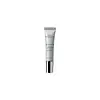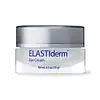What's inside
What's inside
 Key Ingredients
Key Ingredients

 Benefits
Benefits

 Concerns
Concerns

 Ingredients Side-by-side
Ingredients Side-by-side

Water
Skin ConditioningDicaprylyl Ether
EmollientGlycerin
HumectantEthylhexyl Palmitate
EmollientSilica
AbrasiveButylene Glycol
HumectantC20-22 Alkyl Phosphate
EmulsifyingPentylene Glycol
Skin ConditioningTocopheryl Acetate
AntioxidantC20-22 Alcohols
Emulsion StabilisingPolyacrylamide
CI 77891
Cosmetic ColorantCaprylyl Glycol
Emollient1,2-Hexanediol
Skin ConditioningAcrylates/Vinyl Isodecanoate Crosspolymer
Emulsion StabilisingC13-14 Isoparaffin
EmollientAvena Sativa Kernel Extract
AbrasiveCreatine
Skin ConditioningSodium Citrate
BufferingCaesalpinia Spinosa Fruit Extract
Skin ProtectingSodium Hydroxide
BufferingPropylene Glycol
HumectantLaureth-7
EmulsifyingPentaerythrityl Tetra-Di-T-Butyl Hydroxyhydrocinnamate
AntioxidantSilica Dimethyl Silylate
EmollientKappaphycus Alvarezii Extract
Skin ConditioningAdenosine
Skin ConditioningAsiaticoside
AntioxidantCI 77491
Cosmetic ColorantMadecassic Acid
Skin ConditioningAsiatic Acid
Skin ConditioningCarbomer
Emulsion StabilisingSodium Lactate
BufferingSodium Benzoate
MaskingPhenoxyethanol
PreservativeCarnosine
Skin ConditioningPolysorbate 20
EmulsifyingSodium Hyaluronate
HumectantDisodium Adenosine Triphosphate
Skin ConditioningLaminaria Digitata Extract
Skin ProtectingHexylene Glycol
EmulsifyingTocopherol
AntioxidantAlcohol
AntimicrobialTris(Tetramethylhydroxypiperidinol)Citrate
StabilisingPalmitoyl Tripeptide-1
Skin ConditioningPalmitoyl Tetrapeptide-7
Skin ConditioningSuperoxide Dismutase
AntioxidantTromethamine
BufferingWater, Dicaprylyl Ether, Glycerin, Ethylhexyl Palmitate, Silica, Butylene Glycol, C20-22 Alkyl Phosphate, Pentylene Glycol, Tocopheryl Acetate, C20-22 Alcohols, Polyacrylamide, CI 77891, Caprylyl Glycol, 1,2-Hexanediol, Acrylates/Vinyl Isodecanoate Crosspolymer, C13-14 Isoparaffin, Avena Sativa Kernel Extract, Creatine, Sodium Citrate, Caesalpinia Spinosa Fruit Extract, Sodium Hydroxide, Propylene Glycol, Laureth-7, Pentaerythrityl Tetra-Di-T-Butyl Hydroxyhydrocinnamate, Silica Dimethyl Silylate, Kappaphycus Alvarezii Extract, Adenosine, Asiaticoside, CI 77491, Madecassic Acid, Asiatic Acid, Carbomer, Sodium Lactate, Sodium Benzoate, Phenoxyethanol, Carnosine, Polysorbate 20, Sodium Hyaluronate, Disodium Adenosine Triphosphate, Laminaria Digitata Extract, Hexylene Glycol, Tocopherol, Alcohol, Tris(Tetramethylhydroxypiperidinol)Citrate, Palmitoyl Tripeptide-1, Palmitoyl Tetrapeptide-7, Superoxide Dismutase, Tromethamine
Water
Skin ConditioningC12-15 Alkyl Benzoate
AntimicrobialEthylhexyl Palmitate
EmollientC13-15 Alkane
SolventCyclopentasiloxane
EmollientGlycerin
HumectantGlyceryl Stearate
EmollientPEG-100 Stearate
Propylene Glycol
HumectantStearyl Alcohol
EmollientDipropylene Glycol Dibenzoate
EmollientDimethicone
EmollientPPG-15 Stearyl Ether Benzoate
EmollientPolyacrylamide
Cetyl Alcohol
EmollientCetyl Dimethicone
EmollientC13-14 Isoparaffin
EmollientXanthan Gum
EmulsifyingMagnesium Aluminum Silicate
AbsorbentLaureth-7
EmulsifyingTocopheryl Acetate
AntioxidantGlycyrrhiza Glabra Root Extract
BleachingAlgae Extract
EmollientVaccinium Angustifolium Fruit Extract
Skin ProtectingPhenoxyethanol
PreservativeMethylparaben
PreservativeEthylparaben
PreservativeButylparaben
MaskingPropylparaben
PreservativeIsobutylparaben
AntimicrobialHdi/Trimethylol Hexyllactone Crosspolymer
Sodium Hydroxide
BufferingMalonic Acid
BufferingMalachite
Skin ConditioningZinc Carbonate
Silica
AbrasiveTalc
AbrasiveAlumina
AbrasiveMica
Cosmetic ColorantCI 77891
Cosmetic ColorantCI 77491
Cosmetic ColorantCI 42090
Cosmetic ColorantWater, C12-15 Alkyl Benzoate, Ethylhexyl Palmitate, C13-15 Alkane, Cyclopentasiloxane, Glycerin, Glyceryl Stearate, PEG-100 Stearate, Propylene Glycol, Stearyl Alcohol, Dipropylene Glycol Dibenzoate, Dimethicone, PPG-15 Stearyl Ether Benzoate, Polyacrylamide, Cetyl Alcohol, Cetyl Dimethicone, C13-14 Isoparaffin, Xanthan Gum, Magnesium Aluminum Silicate, Laureth-7, Tocopheryl Acetate, Glycyrrhiza Glabra Root Extract, Algae Extract, Vaccinium Angustifolium Fruit Extract, Phenoxyethanol, Methylparaben, Ethylparaben, Butylparaben, Propylparaben, Isobutylparaben, Hdi/Trimethylol Hexyllactone Crosspolymer, Sodium Hydroxide, Malonic Acid, Malachite, Zinc Carbonate, Silica, Talc, Alumina, Mica, CI 77891, CI 77491, CI 42090
Ingredients Explained
These ingredients are found in both products.
Ingredients higher up in an ingredient list are typically present in a larger amount.
This ingredient is also known as "C13-14 Isoalkane".
C13-14 Isoparaffin is created from petroleum-based mineral oils. It is an emollient and helps thicken a product.
As an emollient, it helps keep the skin soft and smooth by creating a barrier on top. This barrier traps moisture in, keeping the skin hydrated.
C13-14 Isoparaffin may not be fungal-acne safe.
Learn more about C13-14 IsoparaffinCi 77491 is also hydrated iron III oxide. It's sole purpose is to give a red/pink hue to products.
Iron III oxides are classified as inorganic chemicals for coloring.
Synthetically created Ci 77491 is considered safer than those naturally found. This is because the synthetically created version may contain less impurities. Iron oxides are generally non-toxic and non-allergenic.
Learn more about CI 77491Ci 77891 is a white pigment from Titanium dioxide. It is naturally found in minerals such as rutile and ilmenite.
It's main function is to add a white color to cosmetics. It can also be mixed with other colors to create different shades.
Ci 77891 is commonly found in sunscreens due to its ability to block UV rays.
Learn more about CI 77891Ethylhexyl Palmitate, also known as octyl palmitate, is created from 2-ethylhexyl alcohol and palmitic acid. It is a fatty acid ester.
The fatty acid content of Ethylhexyl Palmitate makes it an emollient. Emollients help soften and hydrate your skin by trapping moisture within.
Ethylhexyl Palmitate is also used to help improve the texture of cosmetics. It helps other ingredient dissolve in products and help disperse ingredients more evenly.
You'll likely find this ingredient in sunscreen, as it is often used to mix UV-blocking ingredients such as avobenzone and ethylhexyl triazone.
It can also help stabilize the fragrances in a product as a fragrance fixative.
Ethylhexyl Palmitate can be used to substitute mineral oil.
Due to its high fatty acid content, it may not be fungal-acne safe.
Learn more about Ethylhexyl PalmitateGlycerin is already naturally found in your skin. It helps moisturize and protect your skin.
A study from 2016 found glycerin to be more effective as a humectant than AHAs and hyaluronic acid.
As a humectant, it helps the skin stay hydrated by pulling moisture to your skin. The low molecular weight of glycerin allows it to pull moisture into the deeper layers of your skin.
Hydrated skin improves your skin barrier; Your skin barrier helps protect against irritants and bacteria.
Glycerin has also been found to have antimicrobial and antiviral properties. Due to these properties, glycerin is often used in wound and burn treatments.
In cosmetics, glycerin is usually derived from plants such as soybean or palm. However, it can also be sourced from animals, such as tallow or animal fat.
This ingredient is organic, colorless, odorless, and non-toxic.
Glycerin is the name for this ingredient in American English. British English uses Glycerol/Glycerine.
Learn more about GlycerinLaureth-7 is created by the ethoxylation of lauryl alcohol using ethylene oxide. Lauryl alcohol is a fatty alcohol with hydrating properties.
This ingredient is an emulsifier and cleansing ingredient. As an emulsifier, it is used to prevent ingredients from separating. It also helps cleanse the skin by gathering dirt, oil, and pollutants to be rinsed away.
Phenoxyethanol is a preservative that has germicide, antimicrobial, and aromatic properties. Studies show that phenoxyethanol can prevent microbial growth. By itself, it has a scent that is similar to that of a rose.
It's often used in formulations along with Caprylyl Glycol to preserve the shelf life of products.
Polyacrylamide is a synthetic polymer. It is used to stabilize products and bind ingredients. When hydrated, Polyacrylamide forms a soft gel.
Polyacrylamide is low-toxicity. If source properly, it is deemed safe to use in cosmetics.
It should be noted the precursor to Polyacrylamide is acrylamide. Acrylamide is a carcinogen. Most reputable sources of Polyacrylamide will screen for residual acrylamide to make sure the count is in a safe range. Acrylamide is not able to be absorbed through the skin.
We recommend speaking with a professional if you have concerns.
Learn more about PolyacrylamidePropylene Glycol is an odorless, colorless liquid. As a humectant, it helps skin retain moisture. It also aids in delivering active ingredients.
Another role of this ingredient is preventing a product from melting or freezing. Propylene glycol also adds antimicrobrial properties to a product, elongating product lifespan.
This ingredient is considered an organic alcohol and commonly added into both cosmetics and foods.
Those with sensitive skin or conditions may develop a rash when using this ingredient.
Learn more about Propylene GlycolSilica, also known as silicon dioxide, is a naturally occurring mineral. It is used as a fine, spherical, and porous powder in cosmetics.
Though it has exfoliant properties, the function of silica varies depending on the product.
The unique structure of silica enhances the spreadability and adds smoothness, making it a great texture enhancer.
It is also used as an active carrier, emulsifier, and mattifier due to its ability to absorb excess oil.
In some products, tiny microneedles called spicules are made from silica or hydrolyzed sponge. When you rub them in, they lightly polish away dead skin layers and enhance the penetration of active ingredients.
Learn more about SilicaSodium Hydroxide is also known as lye or caustic soda. It is used to adjust the pH of products; many ingredients require a specific pH to be effective.
In small amounts, sodium hydroxide is considered safe to use. However, large amounts may cause chemical burns due to its high alkaline.
Your skin has a natural pH and acid mantle. This acid mantle helps prevent harmful bacteria from breaking through. The acid mantle also helps keep your skin hydrated.
"Alkaline" refers to a high pH level. A low pH level would be considered acidic.
Learn more about Sodium HydroxideTocopheryl Acetate is AKA Vitamin E. It is an antioxidant and protects your skin from free radicals. Free radicals damage the skin by breaking down collagen.
One study found using Tocopheryl Acetate with Vitamin C decreased the number of sunburned cells.
Tocopheryl Acetate is commonly found in both skincare and dietary supplements.
Learn more about Tocopheryl AcetateWater. It's the most common cosmetic ingredient of all. You'll usually see it at the top of ingredient lists, meaning that it makes up the largest part of the product.
So why is it so popular? Water most often acts as a solvent - this means that it helps dissolve other ingredients into the formulation.
You'll also recognize water as that liquid we all need to stay alive. If you see this, drink a glass of water. Stay hydrated!
Learn more about Water